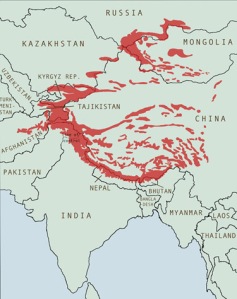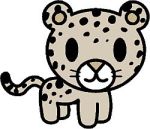I’ve just finished a wonderful book about the Himalayas. Snow leopard country. It’s called “A long walk in the Himalayas – a trek from the Ganges to Kashmir” by Garry Weare.
Weare’s story of his five-month trek from the sacred source of the Ganges through the Kullu Valley, remote mountains of Zanskar and Ladakh (known as Little Tibet) to his beloved houseboat on a lake in Kashmir is an entertaining read. Throughout many years of travel in the Himalayas he has come to know the region, its peoples and cultures well and he writes about them with compassion, empathy and understanding.
Weare has serious Himalaya credentials. He’s a life member of the Himalayan Club, a fellow of the Royal Geographical Society, a noted mountain photographer and a founding director of the Australian Himalayan Foundation.
The book is a travel log, a meditation on walking, a memoir of places visted and loved and a tale of adventure. His journey, which is taken with a secret stash of rum and whisky, involved walking 2500 kilometres, most of it above 5000 metres and crossing at least 20 passes, a tough experience and he lost over 15 kilos.
During a trek in September 1995 Garry was lucky to actually see a snow leopard. “I had left camp early to cross the Konze La, a pass in western Ladakh. There had been an unseasonable snowfall and ….I stopped to watch a herd of yaks. At that point I sensed I was not the only one watching the yaks. Glancing around I caught a glimpse of a large cat. I had seen enough snow leopards in zoo enclosures to know what I was looking at. I just had a glimpse and no more but it was sufficient and for a while I did not move, hoping against hope that the elusive cat would reappear. It was not to be.”
Garry recently tod me, “The cat sighting was after a particular early but heavy snowfall in September. However as you appreciate the best opportunity to get a cat sighting is during the winter soon after the first winter snowfall when the bharal (Himalayan blue sheep, a favourite snow leopard prey) head to the valleys and the cats follow.” Lucky him!! Is all I can say.
Currently Garry is working on a Primary Health Care project in Zanskar and Ladakh, Northern India supported by the Australian Himalayan Foundation. The project trains the local Amchis, traditional faith healers in basic western medical advice. Often these Amchi are the only medical help available to villagers in remote parts of the mountains. Last year the ABC’s ‘Foreign Correspondent’ did a segment on this project (see it here.) Absolutely fascinating.
You can support this and other Australian Himalayan Foundation projects here.





 Posted by Sibylle and Rex
Posted by Sibylle and Rex 











